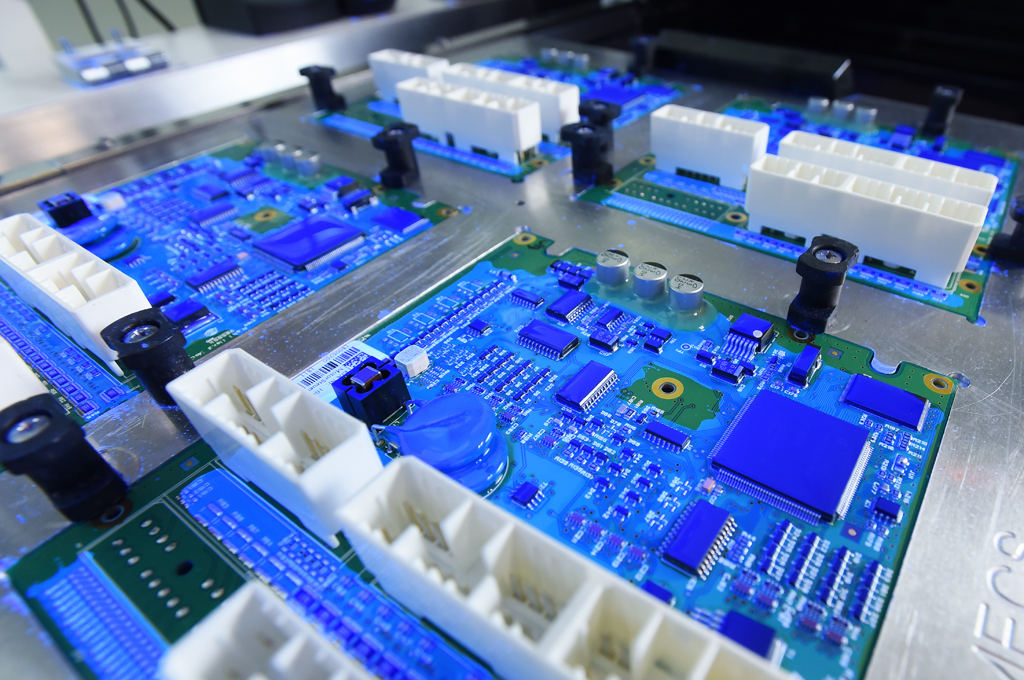As electronic devices are used in more diverse and challenging environments, protecting their sensitive components from things like moisture, chemicals, dust, and temperature extremes is crucial. One of the most effective ways to provide this protection is through the use of conformal coatings. Conformal coatings form a thin, uniform protective layer over entire printed circuit boards (PCBs) and other electronics.
What are Conformal Coatings?
Conformal coatings are thin polymeric materials that are applied in a liquid form and cure to form a protective film. They are designed to cover the entire surface area of a PCB or other electronics in a uniform thickness, hence the term “conformal.” Common conformal coating materials include acrylics, silicones, polyurethanes, and parylene.
Thicknesses can range from as little as 5 microns to 100 microns or more depending on the specific application needs. Thinner coatings allow for use in tightly packaged electronics, while thicker coatings provide enhanced protection in harsh environments. Besides covering vulnerable components and circuitry, conformal coatings also fill gaps and crevices to block ingress of liquids and particles.
How Do They Protect Electronics?
Conformal Coatings protect electronics in several key ways:
Moisture and Chemical Protection
By forming a continuous sealed barrier, conformal coatings prevent moisture, chemicals, salt spray and other contaminants from reaching sensitive components. This corrosion protection allows electronics to operate reliably in high humidity, offshore, agricultural and other demanding applications.
Abrasion Resistance
The flexible yet durable film also protects against wear and tear from environmental factors like sand, dust and vibration. This abrasion resistance prevents short circuits and component damage over the life of a device.
Insulation Properties
Many coatings are electrically insulating, shielding components from electrical interference or arching. They can improve circuit operation in noisy industrial environments.
Temperature Stability
Some conformal coating materials maintain flexibility and protective properties over a wide temperature range. This thermal stability enables applications in hot or cold outdoor conditions.
Optical Clarity
Certain transparent or translucent coatings allow coated electronics to be visually inspected for defects post-application without disassembling.
Contamination Protection
Applying a coating seals electronics to prevent incursion of airborne particles after manufacturing. This avoids field failures from contamination introduced during assembly or shipping.
Conformal Coating Process
The conformal coating process generally involves several stages:
1. PCB Preparation – Boards are cleaned to remove oils and other contaminants to ensure optimal coating adhesion. Sensitive components may be masked to avoid coating deposition.
2. Coating Application – Liquid coatings are sprayed, brushed or dip-coated over the entire board surface and components using automated equipment.
3. Curing – Most conformal coatings are thermally or UV cured to form the protective film layer. Cure time depends on coating type and thickness.
4. Inspection and Testing – Coated boards undergo visual and automated optical inspections to check for coating defects, uniformity and cured film integrity. Functional testing validates electronics performance.
5. Repair (optional) – Any coating defects identified can be manually reworked before the board is packaged.
Conformal Coating Types
Silicone Conformal Coatings
Silicones are very common conformal coating materials due to their flexibility, temperature stability, insulation properties and UV/ozone/humidity resistance. They are optically clear for inspection and cure at room temperature. However, silicones can be expensive.
Acrylic Conformal Coatings
Acrylics (polyacrylates) offer good abrasion resistance and moisture barrier. Cure is usually quicker than silicones. However, acrylics have narrower operating temperature ranges and poor moisture vapor permeability.
Urethane Conformal Coatings
Polyurethanes provide enhanced chemical protection and mechanical strength over silicones/acrylics. They maintain flexibility at lower temps. But urethanes are more difficult to repair if coating defects occur.
Parylene Conformal Coatings
Vapor-deposited parylene coatings produce an ultra-thin, pinhole-free layer and allow coating of complex internal spaces. However, the specialized parylene process can be very costly to implement.
Hybrid conformal coatings combining material properties are also available to meet complex application requirements. The right coating type is chosen based on specific performance needs, environmental factors and budget.
With more and more commercial and industrial electronics operating in harsh conditions, conformal coatings play an essential role in protecting sensitive components from moisture, dust, chemicals and mechanical stresses. Their thin, uniform coating deposition over whole assemblies provides multifaceted shielding without compromising device functionality. As coating technologies continue advancing, operators can select higher-performing coatings tailored for new harsh environment applications. Conformal coatings thereby help ensure electronic reliability for mission-critical systems worldwide.
*Note:
1. Source: Coherent Market Insights, Public sources, Desk research
2. We have leveraged AI tools to mine information and compile it



